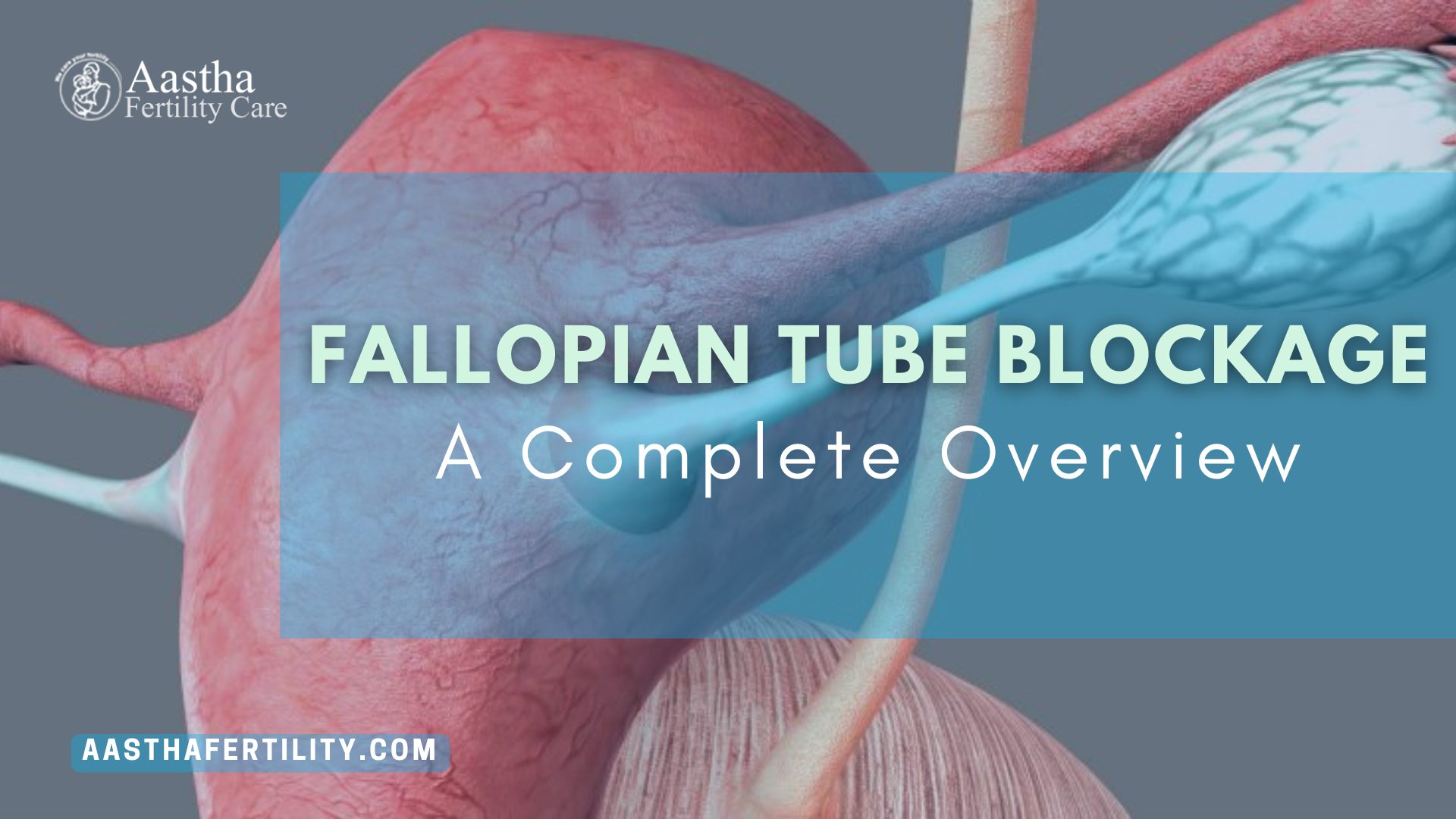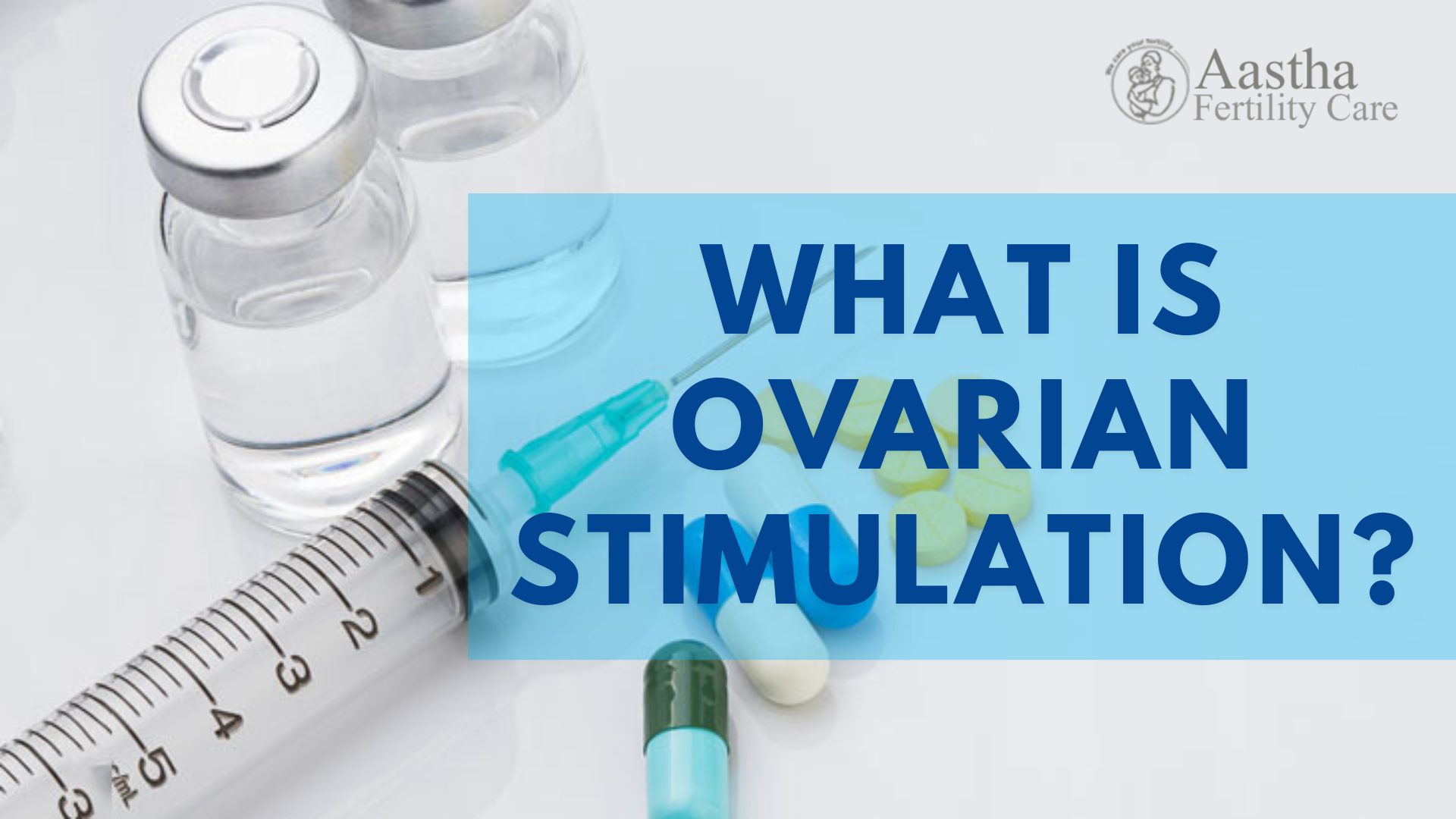Table of Contents
ToggleWHO Study published by the National Institute of Health, USA that Female Infertility contributes to 35% of failed pregnancies, and blocked fallopian tubes are one of the most common causes on the list of infertility. Are you also diagnosed with fallopian tube blockage? What does it mean? What are the chances of getting pregnant with blocked fallopian tubes? How to get pregnant with blocked fallopian tubes?
Many people relate pregnancy and its complication to menstrual cycles. Those who have regular periods always indicate healthy fertility. But this is not always true!
Getting pregnant, the journey overall can be tough. But, if you have fallopian tube blockage, it could be more challenging to get a positive result.
A healthy fallopian tube is responsible for carrying a mature egg from the ovaries to the uterus. One of the two fallopian tubes needs to be open and healthy for a successful conception.
WHO Study published by the National Institute of Health, USA states that Blocked Fallopian tubes are responsible for 11% of female infertility cases, and an obstruction prevents the egg from travelling down the tube, causing tubal factor infertility. Moreover, there are no potential symptoms for self-determination.
This blog will help you with the details of blocked fallopian tubes, providing all the reasons and treatments to overcome the complications of blocked damages, and will also provide you with some tips for conceiving with one fallopian tube.
What Is the Role of Fallopian Tubes in Pregnancy?
In a female reproductive system, the fallopian tubes are where fertilization occurs. These narrow ducts connect the ovaries from the uterus, measure only half an inch in diameter, and play a vital role in achieving pregnancy.
These finger-like projections collect ovulated eggs from the adjacent ovary that further travel down the tube. On their way, they may encounter sperm, and, in some cases, fertilization takes place in the fallopian tubes themselves.
The egg travels down its path to the uterus and the sperm, where it can implant and grow. In the case of blocked fallopian tubes, the passage is blocked, further preventing the egg from coming down toward the uterus and restricting the passage for sperm to travel.
Blocked Fallopian Tubes – Symptoms
Getting pregnant with blocked fallopian tube is nearly impossible.
A blocked fallopian tube occurs when a blockage stops the egg from passing down the tube. Fallopian tube Blockage symptoms are mostly limited to the inability to conceive. Typically, doctors classify this as having attempted to conceive for one year without any positive result.
- Women may have pelvic or abdominal discomfort because of blocked fallopian tubes. This discomfort may occur periodically, such as during their menstruation, or be persistent.
- A fallopian tube obstruction might cause a fertilized egg to get stuck, and this condition is called an ectopic pregnancy.
- Symptoms of ectopic pregnancy are not always present, and a scan often diagnoses the condition. Yet, some women may have pregnancy symptoms such as one-sided stomach ache or vaginal bleeding.
What are the Reasons Behind Blocked Fallopian Tubes?
Several reasons contribute to the blockage and damage of fallopian tubes, and nearly 19% to 29% of women facing infertility issues have tubal obstructions. Pelvic Inflammatory Disease (PID) is the most common cause of blocked fallopian tubes.
PID is a bacterial infection in the female reproductive system due to sexually transmitted diseases. It directly affects the fallopian tubes and the uterus, blocking the passage for eggs and sperm.
This infection can further lead to abscess growth, pelvic pain, scars in the tubes, and even ectopic pregnancy if not treated within time.
Apart from PID, some of the additional fallopian tube block reasons are:
- Fibroids: Fibroids do not directly block the tubes, but the growth can sometimes hinder the diameter of the passage. Miscarriages often lead to scar tissue build-up, further blocking the fallopian tubes.
- Endometriosis: Endometriosis refers to the unexpected growth of endometriosis outside the uterus. This growth can block the fallopian tubes, damaging the passage while resulting in unsuccessful conceptions.
- Previous surgery on the reproductive system: Prior surgeries can also bring on obstructed or impaired fallopian tubes. Other types of abdominal surgery, as well as surgery for illnesses like endometriosis or uterine fibroids, may leave scarring that hinders the ability of an egg to transit through the fallopian tubes.
- Hydrosalpinx: A hydrosalpinx might make it difficult for you to become pregnant due to a fluid buildup in your fallopian tubes. A hydrosalpinx can result from injury to your fallopian tubes, most frequently resulting from an untreated illness.
- Scar Tissue or Adhesions: The uterus, fallopian tubes, and ovaries may become tangled due to pelvic adhesions (scar tissue). Such adhesions frequently stop the reproductive parts from operating normally, which causes pelvic pain and infertility. However, for females with pelvic aches and infertility, skilled surgical excision of this scar tissue can enhance their life quality and fertility. Adhesions can be challenging to diagnose and cure.
- Congenital Abnormalities: A congenital tubal blockage is an uncommon cause of obstructed fallopian tubes that develops from birth. Fertilization is impossible since the blocked tube(s) won’t allow the sperm and egg to meet. When only a single Fallopian tube is blocked, subfertility develops because the other tube allows sperm and egg to meet. If left untreated, female infertility develops when both Fallopian tubes are closed.
- Pelvic or Abdominal Surgeries
- STD infections
- Miscarriages
- Uterine Infections
Can ‘Flushing’ Blocked Fallopian Tubes Improve Fertility?
A procedure that “unblocks” a woman’s fallopian tubes by flushing them with fluids has been employed for decades but with different degrees of effectiveness. Research has verified that the technique dramatically boosts fertility and that a specific sort of fluid — oil-based instead of water-based — produces excellent outcomes.
The research, published in The New England Journal of Medicine, included 1,119 women from 27 hospitals in the Netherlands. All women were below 38 years and had attempted to conceive for 18 months.
Women were randomly assigned either an oil-based or water-based solution. The key result, continued pregnancy, happened in 220 of 554 (39.7 percent) women randomly allocated to the oil contrast and 161 of 554 (29.1 percent) women allocated to the water contrast.
7 Steps of Getting Pregnant with Blocked Fallopian Tubes
If you are trying for a baby and have been diagnosed with fallopian tube blockage, you will be pleased to know that you can still get pregnant despite the damage to your fallopian tubes. Moreover, many surgeries and treatments help repair the blockage and damages, clearing the path for egg and sperm to travel for implantation.
1. Know the Importance of Fallopian Tubes
As we have already discussed the role of fallopian tubes; these projections are an essential part of pregnancy. The tube needs to be free of adhesions and free to carry the sperm and egg. A damaged or blocked fallopian tube prevents the egg from meeting the sperm, resulting in unsuccessful pregnancies.
2. Know What Block the Fallopian Tubes
Before going for any course of treatment, you first need to identify the cause of blockage and damage in the fallopian tube affecting fertility. Consult your doctor, who will suggest the ideal tests and screening to know the cause, further advising an ideal treatment for the increased chances of a positive result.
3. Contact the Fertility Expert
Now that you are entirely aware of the importance of fallopian tubes, you would not want to risk it anymore. Falling pregnant with damaged or blocked fallopian tubes requires the help of specialists.
Aastha Fertility Clinic provides you with the best treatments and support for your pregnancy journey. They have a list of highly qualified professionals serving their patients for over 5+ years and hold the highest record for successful IVF treatment in India.
4. Attend the Consultation Session
After you consult your doctor, they will organize a consultation session for you to discuss the problem, related complications, and treatments for the same. This session will hardly last for 60 minutes where the fertility expert will-
- Conduct research on your medical history,
- Provide answers to all your queries,
- Explain all the possible list treatments,
- Perform some blood and physical tests to know the situation,
- Suggest you the best treatment by analyzing all its pros and cons.
5. Know the Severity of the Damage
Your doctor will conduct some tests, including the hysterosalpingogram, and a pelvic x-ray that helps determine the severity of the blockage. It involves administering a medically approved dye in the uterine cavity that clears the vision for blockage and damage.
6. Know Which Treatment is Ideal for Your Recovery
There are two options to repair the blocked and damaged fallopian tubes, further allowing you to carry a baby in your womb.
- Tubal Surgery- This is an open surgery that helps remove the scar tissues and other obstacles blocking the passage. However, the success of this procedure depends on various factors, including the location, blockage cause, and age of the mother.
- IVF Treatment for Blocked Fallopian Tubes- In IVF treatments, women are treated with fertility drugs to stimulate the ovaries. The fertility experts further retrieve these eggs and complete the fertilization process in the labs. This eliminates the fallopian tubes’ role and provides increased chances for successful pregnancies.
Read Also: IVF Success Rate
7. Get the Complete Treatment
The selection of an ideal treatment is just the beginning of the journey. Make sure to get assisted by the best fertility experts. Aastha Fertility Care provides you with a comfortable and caring environment, helping you build a healthy family with the best treatments and assistance.
How to Test the Blockage?
There are several ways to test the severity of damage and blockage in the fallopian tubes.
1. HSN (Hysterosonography)
It is one minimally invasive procedure that detects tubal swelling and other possible obstructions blocking the passage. It is conducted with a saline solution or due that helps with a clear representation of the uterus.
2. HSG (Hysterosalpingogram)
To get a more precise and in-depth look at the fallopian tubes, HSG can help you with ideal results. In this, the uterus is filled with a medically approved liquid, and an x-ray is conducted to know the movement of this liquid in the uterus.
Also Read: When Is The Best Time to Have an HSG Test?
3. Laparoscopy
Laparoscopy is one of the most trusted and demanding medical history procedures for blocked fallopian tubes. It is conducted with two small incisions, and a small telescope is inserted into the abdomen.
After placing the devices, a dye test is conducted. In this, the womb is filled with a blue dye. If it spills out into the pelvis, then the tubes are free, and if not, the blockage is the issue preventing the pregnancy.
Read also: Role of Laparoscopy or Hysteroscopy in IVF Treatment
Tips on Getting Pregnant with Blocked Fallopian Tubes
If either of the tubes is open and functioning, it is viable to conceive naturally. Fertility medications may help to boost the likelihood of ovulation with the open tube. Unfortunately, this is impossible if there is a blockage in both tubes.
Here are some tips/methods that may help you conceive:
- Laparoscopy surgery: In rare instances, laparoscopic surgery may unblock obstructed tubes. However, this technique is not always effective. The success likelihood depends on the tubal blockage’s location, size, and etiology. 20 to 40 percent can conceive following surgery if the tubes are healthy.
- IVF: Before IVF, women with clogged tubes had no choice for becoming pregnant if restorative surgery failed. Even in these instances, conception is achievable thanks to IVF. IVF Procedure has a success of between 45 and 50 percent every cycle and is a viable therapy option for women with obstructed tubes.
Best Fertility Treatments for Blocked Fallopian Tubes
Many fertility treatments vary from low-complexity therapies to more involved treatments like IUI procedure or IVF treatment. But the selection of fertility experts plays a vital role in the success of this treatment, be it for blocked fallopian tubes or any other complex procedure.
Aastha Fertility Care experts to give you a full assessment for the right course of action and treatment!
Frequently Asked Questions
1. Can I naturally get pregnant with blocked fallopian tubes?
In case either of your tubes is open, pregnancy is possible. However, if both of your tubes are blocked, there is no chance of conceiving naturally. However, if one or both blockages get removed, pregnancy is likely.
2. What will happen if the fallopian tube in females is blocked?
An egg gets fertilized if a fallopian tube is partly obstructed, but it may remain trapped in the tube. So this causes ectopic pregnancy, a medical emergency.
3. Where does the egg go if fallopian tubes are blocked?
An egg cannot move via your fallopian tubes toward your womb if they are fully clogged. To get pregnant, you would need to see a fertility doctor, and your doctor can unblock the blockages with surgery on rare occasions.
4. What is the Endometriosis problem?
Endometriosis is a painful condition where tissue looks like the endometrium, and it lines the inside of your uterus and develops outside of it. The condition affects your fallopian tubes, ovaries, and the tissues lining your pelvis most often.
5. Is it possible to conceive after Tubal surgery?
It is possible to get pregnant with tubal surgery, although this is uncommon. Your chances range from 1% to 3.7 percent, depending on age and surgical type. Getting pregnant following a tubal ligation raises your chances of having an ectopic pregnancy.
6. Is pregnancy possible with one blocked uterine tube?
If you and the single tube are both healthy, you can become pregnant with only one fallopian tube.
7. If one or both of my fallopian tubes are obstructed, can I still have a healthy pregnancy?
As there are two ovaries, even if a single fallopian tube is obstructed, a pregnancy can still occur since the egg can pass via the opposite side of the body. However, it won’t be feasible to become pregnant naturally if both tubes are closed unless you get one or both opened.
8. How can I tell whether one or both of my fallopian tubes are blocked?
Laparoscopy or a hysterosalpingogram (HSG) are two ways to find the fallopian tube blockage.
9. Are there any medications I can take to help me become pregnant with blocked Fallopian Tubes?
Your doctor may prescribe fertility medications to you to boost the likelihood that you will ovulate on the side of the tube that is still open. But if both tubes are blocked, this is not a choice.
It’s crucial to understand that even if this medicine is provided to aid in conception, it cannot assist in unblocking a blocked fallopian tube.
10. How long does it take to conceive when the fallopian tubes are blocked?
Pregnancy is unquestionably achievable with the assumption that both you and the single fallopian tube are healthy. In fact, up to 85% of women between the ages of 22 and 28 who have only one tube can conceive within two years of persistently trying.
11. What are the risks associated with getting pregnant with blocked Fallopian Tubes?
Without medical intervention, pregnancy will not be feasible if both tubes are completely closed. You might be able to conceive even with partially obstructed fallopian tubes. But the chance of an ectopic pregnancy rises. A blocked path makes it more difficult for a fertilized egg to enter the uterus.
12. Are there any lifestyle changes that can help me get pregnant with blocked Fallopian Tubes?
Some lifestyle changes such as exercising, consuming more vitamin C and Omega 3 fatty acids, quitting smoking and alcohol, and reducing stress may help you conceive with one blocked Fallopian Tube.
13. How important is it to seek medical advice from a fertility specialist for blocked fallopian tubes?
Given the significance of your fallopian tubes in conceiving and how delicate and easily damaged they are, getting pregnant with injured or clogged fallopian tubes would require professional assistance.





Leave a comment